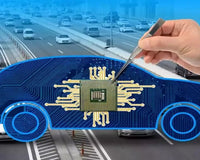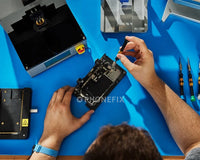In today's modern automotive landscape, car chips have become the lifeblood of vehicles. These tiny yet incredibly powerful components are everywhere in a car, from the engine management system to the infotainment console. Alongside them, car repair chips play a vital role in maintaining and restoring a vehicle's functionality. Let's take a deep dive into the world of car chips.
Car chips, also known as automotive integrated circuits, are responsible for a wide array of functions. Engine control unit (ECU) chips, for example, manage the engine's performance. They regulate fuel injection, ignition timing, and air - fuel ratios. By precisely controlling these parameters, the ECU chip ensures that the engine runs smoothly, optimizes fuel efficiency, and reduces emissions.
Another important type is the transmission control module (TCM) chip. This chip controls gear shifting in automatic transmissions. It monitors various sensors such as vehicle speed, engine load, and throttle position to determine the optimal time to shift gears, providing a seamless driving experience.
Infotainment system chips are also crucial. They power the display, handle audio and video playback, and enable connectivity features like Bluetooth and GPS navigation. These chips make our in - car entertainment and navigation experiences more intuitive and user - friendly.
However, over time, car chips can malfunction due to various reasons. Electrical issues, such as voltage spikes, can damage the delicate circuitry within the chips. Extreme temperatures, both hot and cold, can also affect their performance. When a car chip fails, it can lead to a range of problems, from a decrease in engine performance to a complete failure of the infotainment system.
This is where car repair chips come in. Car repair chips are designed to replace faulty or damaged chips in a vehicle. For example, if an ECU chip has been damaged, a replacement ECU repair chip can be programmed to match the specific requirements of the vehicle's make and model. This not only restores the engine's proper functioning but also ensures that the vehicle meets all regulatory standards.
The Process of Installing Car Repair Chips.
Installing a car repair chip is a delicate process that requires specialized knowledge and tools. First, the mechanic needs to accurately diagnose the problem and identify the faulty chip. This often involves using diagnostic equipment that can communicate with the vehicle's on - board computer system.
Once the faulty chip is identified, the mechanic carefully removes it from its socket or circuit board. In some cases, soldering may be required to disconnect the old chip. Then, the new repair chip is installed. If it's a programmable chip, it needs to be programmed with the correct software and KT200 programmer to the vehicle. This programming ensures that the chip can interact properly with the other components of the vehicle's system.
How to choose car chip?
When selecting a car repair chip, it's essential to ensure compatibility with your vehicle's make, model, and year. Different cars have different electrical systems and computer architectures, so a one - size - fits - all approach won't work. It's also crucial to source repair chips from reputable suppliers, such as China ecufixtool Shop. Counterfeit or low - quality repair chips may not function properly and could potentially cause further damage to your vehicle's electrical system.
In conclusion, car chips, whether for repair or performance enhancement, are an integral part of modern car technology. They offer solutions to common vehicle problems and the potential for exciting performance upgrades. However, like any automotive modification, it's important to do your research and make informed decisions to ensure the best results for your car.
The Crucial Role of Car Chips in the Automotive World










